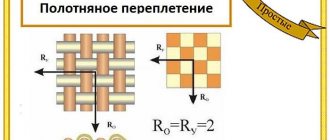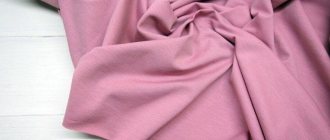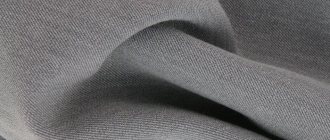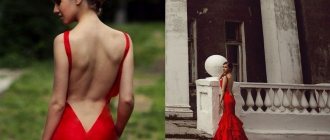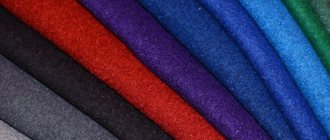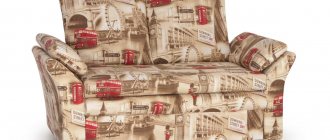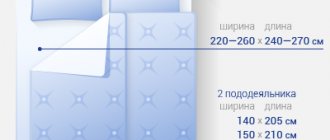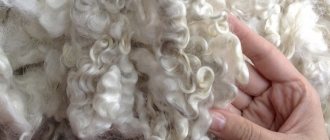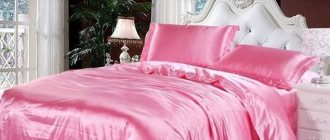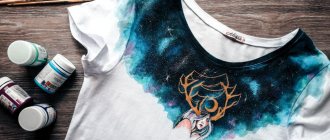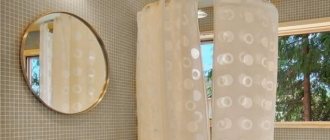A pencil skirt should be in every woman's basic wardrobe. There is no figure that it would not make more attractive. Wide hips will appear slimmer with a Midi length, and the pencil shape does not hide the beauty of your legs even with this length. You can wear a pencil skirt to work, for a walk, for business and romantic meetings, to a restaurant and to parent-teacher meetings. There are universal materials, and there are those that are intended for special cases:
- Daytime and evening;
- Youth and for older ladies;
- Strict and shocking.
When choosing a material for sewing a pencil skirt, you should take into account the time of year in which it will be worn and the effect that should be achieved.
What fabric to choose for a pencil skirt
Based on the fact that a pencil skirt is tight-fitting and should highlight the roundness of the hip, the material should become a second skin. The silhouette of the lower part of the female figure should resemble a mermaid's tail. This means that the fabric must not only stretch so as not to restrict movement when walking, but also not deform from constant stretching. For everyday wear, you need to choose fabric with a large amount of elastane. The model will be the simplest, tapering towards the bottom. The basic model of a pencil skirt does not have exact instructions on the length, the presence of a cut or slit, or flounces. Women's figures are varied, and to correct such a flaw as the same width of the hips and waist, you will need a cut-off flounce in the upper part of the skirt, extending from the belt. Visually, this detail will add volume to the hips. The silhouette of a female figure will appear like an hourglass, and this is the dream of many representatives of the fairer sex. A detail such as an upper flounce will allow a pencil skirt made for work to fit within the dress code. Which fabric to choose for a pencil skirt with a flounce should be determined by which color you like best. The universal color is black, it is suitable for special occasions, work, and visiting a cafe. The flounce is a decoration; so that it does not simply follow the shape of the belt, hanging down like a rag, you will need lining fabric. In order for the pencil material to hold its shape longer, it is also placed on a lining fabric. For dense synthetic fabric, which is more practical, it is better to choose taffeta as a lining; it does not electrify.
How to choose fabric for a pencil skirt for the cool season
You need to sew a warm skirt for early spring, when you want bright colors in your wardrobe, you want to part with a thick coat, and the weather is still too deceptive. In this case, you should choose wool fabric and flannelette lining. The peculiarity of these materials is their low stretchability. Therefore, the model must be selected with a cut, or better yet, with a fold. For a short skirt above the knee, you can take checkered red or blue woolen fabric. If you plan to cover your knees, then it is better to take a plain material. In this case, you can protect your knees from the cold in two ways - simply lengthen the pattern or add a wide flounce to the short basic model. In the second case, you will get a “bell”, the fashion for which came in the late 80s of the last century and was very much loved by the fair sex. The bell skirt became the ancestor of the pencil model. For sewing it was used:
What fabrics are used to make skirts?
Regardless of the chosen style, the fabric should be breathable, not fade after multiple washes, and, if necessary, keep its shape.
Rules for choosing material depending on the style:
| Name | Recommendations |
| Sun, half sun | Any airy, light material, for example cambric or chiffon |
| Pencil | Linen, knitted, corduroy, tweed fabric, thick silk, genuine leather |
| With pleats | Mixed fabrics, synthetic, airy |
| Trapezoid | Artificial suede, eco leather |
| Tulip | Silk in its pure form or mixed with satin, with viscose |
| Tutu | Tulle, chiffon and mesh |
For narrow skirt models, it is better to choose medium-thick knitwear that will hold its shape while being elastic.
Elegant pencil skirt
An evening asymmetrical skirt made of fine knitwear looks very elegant. Thanks to this choice of fabric for sewing a pencil, it is possible to create a feminine, delicate image. The basic pattern is based on the length to the middle of the ankle. Despite the expected drape and length of the skirt, this model is designed for a slender lady with beautiful slender legs. The secret of sewing a skirt is that the back part, as it should be when sewing a pencil skirt, is made with undercuts, and the front edge from one side is pulled to the opposite side and sewn under the belt. This creates a flowing drapery on the front. With this type of skirt tailoring, one knee will be visible.
Pencil skirt: choosing fabric
How to sew a pencil skirt? We chose warm wool with a vibrant tartan pattern. For such a skirt, suit-type fabrics are best suited, but you can also sew it, for example, from denim or corduroy. A pencil skirt made from medium-density fabrics can be single-layered, and for thick woolen or suiting fabrics we recommend sewing a lined skirt.
To calculate the required amount of fabric, you need to take measurements of the hip circumference and skirt length. If the hip circumference plus 8 cm is less than the width of the fabric, a cut length equal to the length of the skirt plus 10 cm for the belt and allowances will be enough for you. Otherwise, you will need two lengths plus 15 cm. The same piece of fabric will be needed for the lining; it can be matched to the tone of the main fabric or be of an interesting contrasting color.
The pencil skirt has a hidden zipper at the back as a fastener, as well as a small hook on the narrow belt. A hidden zipper can be sewn either using a special foot or a standard foot, and we will show in the photo how to do this. There is another way to process the lining in skirts with vents, when the lining simply has a figured cutout in the place of the vents, but we will show you how to sew a lining with your own hands in a more professional way.
So, let's sew a pencil skirt!
Pattern modeling
Create a basic skirt pattern using our tutorial.
Set aside the desired length of the skirt along the lines AN and A1H1 and draw a horizontal line. From the point of intersection of the side line TB1 with the new bottom line, set aside 1-2 cm to the right and left for a short skirt or 2-2.5 cm for a skirt about 60 cm long.
Decide on the length of the vent, usually on average it is a little less than 1/3 of the total length of the skirt. The width of the slots is 3-4 cm. Mark the height of the slots on the pattern of the back half.
Uncover
It is recommended to wash and iron the fabric before cutting. Seam allowances: 1.5 cm on the middle back seam, 1 cm on all other seams, 3 cm on the bottom edge.
From the main fabric you need to cut out a front piece and two back pieces.
Add a one-piece slot to the back halves, as shown in the diagram, focusing on the mark for the height of the slot and the width of 3-4 cm. The slot width is double on the right half, and single on the left.
The front half of the lining is cut out in the same way as the half of the main fabric.
The back halves of the lining are cut out according to the diagram: the right one exactly according to the pattern, the left one with a cutout for the vent (plus an allowance!)
For the belt you will need a strip 5 cm wide and a length equal to the length of the top edge of the pattern plus 2 cm for allowances.
Cut out a strip of non-woven fabric with a length equal to the length of the belt without allowances and a width of 2 cm
Watch the direction of the grain thread - it should be parallel to the length of the pattern.
Baste and sew darts on the skirt parts from the main and lining fabrics.
Press the darts of the front halves of the main fabric towards the side seams, and the darts on the lining in the opposite direction.
Overcast the center back seam allowance and baste it. Press the seam allowances to the sides. Place a hidden zipper on top of the ironed seam allowances and pin. Baste the sides of the zipper to the seam allowances without catching the main fabric of the skirt.
Remove the pins and pull out the basting along the length of the zipper. Open the zipper.
Insert the zipper foot. Bend back the teeth and insert the needle as close to the teeth as possible. If you have a foot specifically for a hidden zipper, it will unscrew the teeth itself. Sew along the entire length of the zipper until the foot rests on the zipper. Make a fastener. Sew the other half.
Stitch the rest of the seam under the zipper. Place the needle to the far right. Start the seam 5-10 mm above the end of the zipper stitch. Insert the needle, stepping back from the zipper seam by 1 mm. Finish the seam before starting the vents.
Sew the side seams of the skirt from the main fabric. Sew the side seams of the skirt using the lining fabric. Sew the middle seam at the back of the lining from the start mark of the vent to the start of the zipper. Press the middle seam allowances.
Iron the vent on both halves to the wrong side: on one side to the edge, at the level of the seam, on the other side - in half. Insert the main skirt into the lining skirt, right sides together. Match the seam allowance of the lining and the seam allowance of the folded vent in half, fold the entire lining down from the waistline and baste along the length of the vents. Stitch, bring the lining up again and iron. Cut the allowance in the corner of the lining on the other side of the slots.
Fold the seam allowance along the short upper side of the vent and pin it to the main skirt. Fold in the second vertical seam allowance and press. Fold back the lining and stitch the pressed lining seam allowance to the vent seam allowance of the main fabric. Unfold the lining and press the seam.
Remove the pin from the top of the vent, fold back the lining, and stitch the seam allowance of the short piece to the vent seam allowance of the main skirt.
Lift the lining again and press.
Sew the middle seam allowance of the lining to the middle seam allowance of the main skirt.
Fold the bottom edge of the skirt and lining twice so that the lining is 1-2 cm shorter than the main skirt and baste. Hand hem the bottom edge using a blind stitch.
Iron the interlining to the waistband strip. Place the reinforced strip and the top edge of the skirt right sides together. Pin or baste along the entire length and stitch, retreating 5mm from the edge.
Iron the free long edge of the belt strip inward by 5-7 mm. Fold the waistband up and iron the seam. Fold the edges of the waistband in half, right sides facing in, and pin. Sew along the short side, departing from the edge 5-7 mm (the stitch should protrude 1 mm beyond the edge of the zipper) and stop near the ironed fold.
Turn the corners of the waistband inside out, fold them inside out, fold them in half, and pin them together, covering the seam allowance with the folded edge of the waistband. Baste the waistband, iron it and sew it by hand with a blind seam to the seam allowances.
Sew on the hook and eyelet so that the edges of the waistband touch when closed.
The pencil skirt is ready!
Asymmetrical pencil skirt
When you decide to treat yourself to something new for spring, you should take into account the changeability of the weather and choose a model that hides your legs, at least partially. The chills usually come not from the frost, but from the cold wind. You don't have to open them all the way to show off your legs. It is enough to make only the front part of the skirt short. An asymmetrical skirt requires slightly more fabric. A mandatory element of a thick woolen heavy skirt will be a petticoat; it will become the basic shape of a pencil skirt. The upper part of the model is cut from three elements.
- The long part, just below the middle of the ankle, is a fabric equal to 1/3 of the width of the skirt.
- Short front placket ≈ 1/3 front.
- Belt.
The difficulty of this model lies in the insertion of undercuts, because sewing such a skirt will require the material used to make outerwear. It will be decorated with decorative garus stitching on the seams.
Choosing a model
You cannot think that a straight skirt is boring. After all, there is a huge variety of styles that differ not only in decorative elements, but also in the length and texture of the chosen material. For slender girls of short stature, a straight skirt with a vent is ideal. And if you choose black material for sewing the product, you will get an ideal option for creating an office style. These skirts can be worn to work or school.
A straight skirt always emphasizes your figure. For those with a wide pelvis, a knee-length pencil skirt is perfect. This model will highlight the hips and help hide imperfections. A pencil skirt will look great in combination with a formal vest or a flirty blouse.
A straight floor-length skirt is a great option for summer. To sew such a product, it is better to choose light flowing fabrics. Knitwear will also work. A long straight skirt should be designed correctly. The construction should be based on the characteristics of the figure of the fair sex. If you plan to sew a model from coarse fabric, you need to think about where the slot will be located.
Fine wool pencil skirt
Fine wool with the addition of elastic artificial thread is a fabric that provides wearing comfort, warmth, and excellent body temperature regulation. It makes wonderful, versatile, below-the-knee skirts. This skirt is universal, it can be worn both in winter and summer. The only problem that may arise is the step limitation. This problem is solved by cutting. Two small knee-length slits on the front shelf of the product are not just a tribute to beauty, but a necessity. A narrow skirt with slits with a wide step can lose its appearance if there is no elastane in the fabric at all. But even a small amount may not protect the fibers from breaking. The most vulnerable place of this model is the tops of the cuts. In addition to lining the inside, you should secure the tops of the cuts with nice large buttons on the outside. Attention! If you cannot find perfectly matching buttons, then you can use any (with legs) 2.5-3 cm in diameter, covering them with the same material that was used when sewing the “Pencil” skirt itself.
Choice depending on style
Skirts are made from almost any fabric. But, we must take into account that thick, dense fabrics are difficult to drape: corduroy, velvet. It is difficult to make the stitching even on a slippery and thin fabric. If you do not have sewing skills, it is better to choose thick denim or linen. They are easy to process and decorate.
Sun, half sun
Light, flowing materials are suitable for these styles:
- natural cotton, with fibers twisted around its axis, tolerates high temperatures well, but wrinkles quickly;
- cambric, most often mixed, hypoallergenic, thin, does not shrink, requires delicate washing;
- chiffon, thin, translucent, so you will need a petticoat, electrified;
- satin, semi-silk, silk fabric, smooth, breathable.
Important! The fabric for the sun skirt should be light. To hide imperfections, it is better to let it fall freely.
This style of skirt is easy to sew. It is actually a semicircle or circle with a hole in the middle.
Pencil
The model has a straight silhouette. The fabric chosen is dense, stretch is allowed. Add a lining if the material is too thin and shows through.
Recommendations for selection:
- cashcorse, knitted fabric with a large elastic band, can be washed at a temperature not exceeding 40°C;
- interlock, a type of knitwear, without the wrong side;
- ribana, a uniform, smooth knitted fabric;
- tweed, woolen, wool-blend material, hard to wash, warm, durable;
- Jersey, knitted blend, wear-resistant, easy to drape;
- corduroy, a brushed cotton material, strongly attracts dust and dirt and requires careful care.
Suitable fabric for a pencil skirt for the summer is linen and denim, preferably with the addition of elastane so that the item does not hinder movement.
Trapezoid
Any blouses, tops, sweaters, shirts, jackets are suitable for this style of skirt. Fits any body type. You can decorate with pockets, sew with a wrap. The main rule of choice is dense material that will keep its shape. You cannot sew a trapezoid from “loose” fabrics.
Recommendations for selection:
- eco-leather is made from a fabric base coated with a microporous polyurethane “breathable” film; wear-resistant, flexible, quickly deteriorates from direct sunlight and sealed packaging;
- gabardine, dense wool (wool blend) fabric, strong, durable;
- artificial suede is made from cotton materials (base) coated with polyester, the main disadvantage is that it gets dirty quickly;
A tapestry will do. The fabric is dense due to the cross weaving of the threads. It has a bright texture, is not afraid of sunlight, does not accumulate static electricity, and does not pill.
Author:
Anastasia Kukushkina
I hope you enjoy the article I have prepared for you! If you find errors in it, write to me about it! I will answer any questions you have, ask them!

